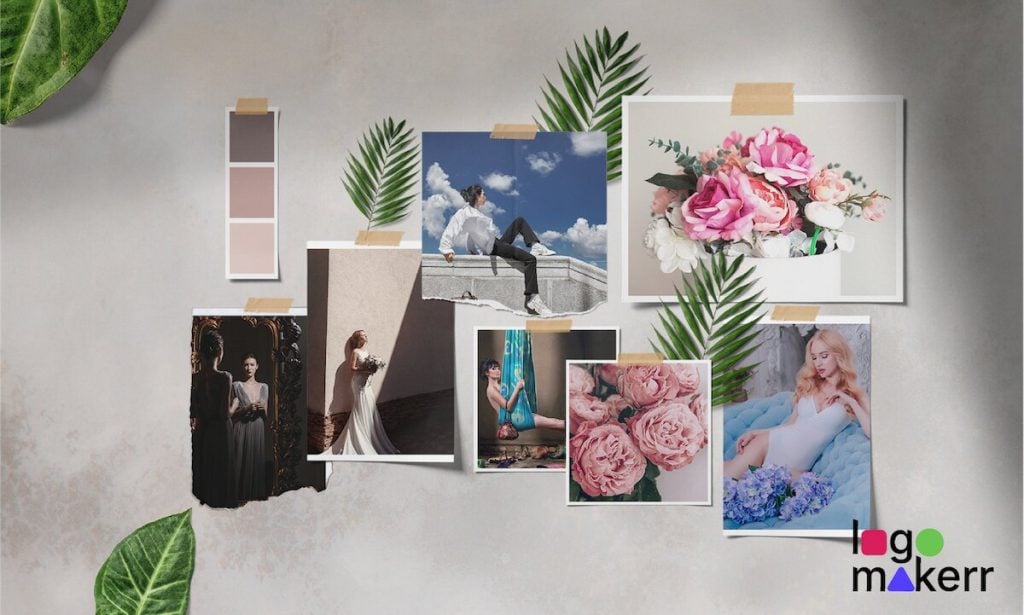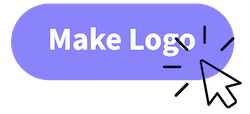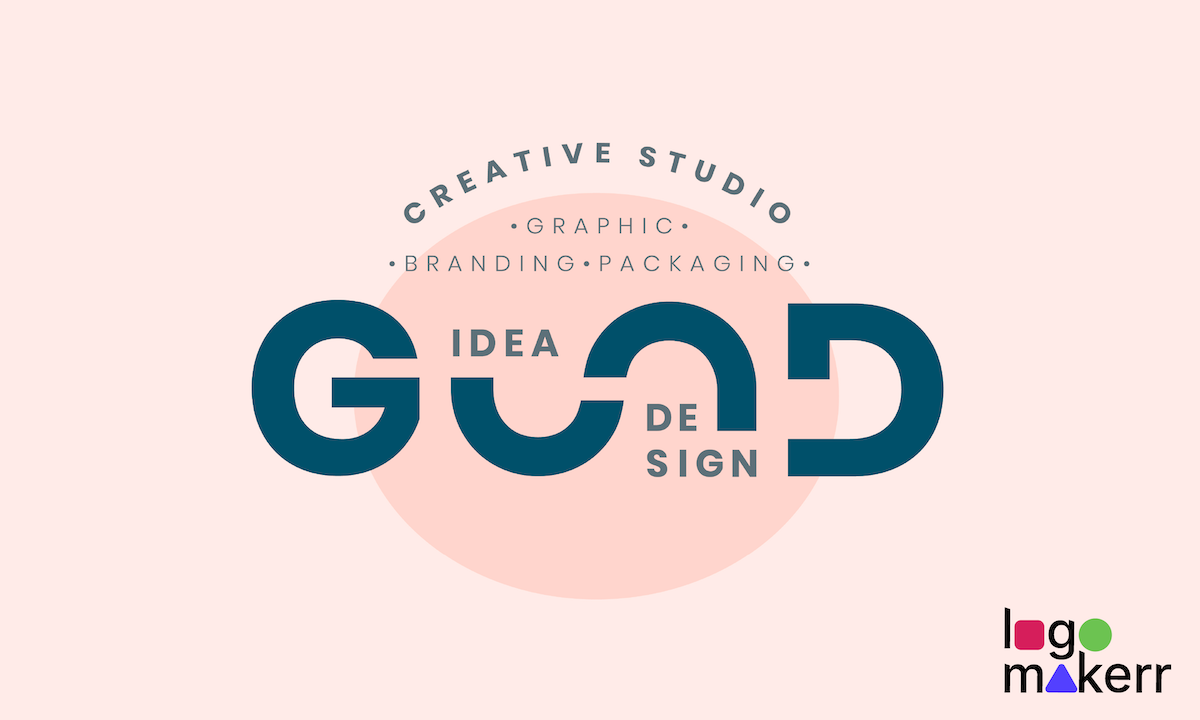If you’re eager to bring your creative visions to life, a mood board is the perfect tool to help you translate your ideas into a tangible form. It’s not just a simple collage of scrapbooks back in high school.
It’s a collage of inspiration that allows you to explore different possibilities, experiment with combinations, and refine your vision.
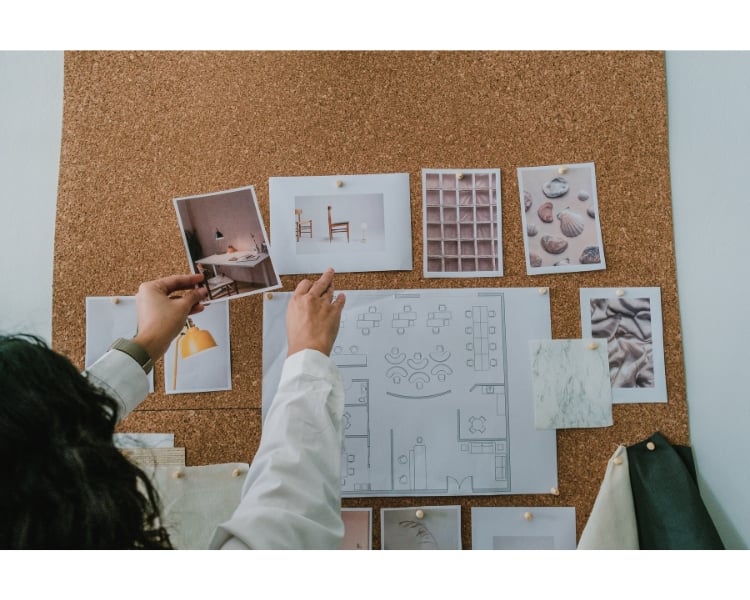
But mood boards came a long way from the traditional printouts to PDF form or texts, colors, and stickers. As more creative professionals use mood boards, alongside AI logo maker tools, they unlock a new level of creativity! For instance, an online screen recorder can be a valuable tool for capturing and sharing the creation process or for presenting your mood board to a remote team.
So, if you’re ready to unleash the full potential of your imagination, let’s dive into the world of mood boards and discover the limitless potential they hold.
Finally, let’s answer within – ‘How to Make a Mood Board?’
What’s a Mood Board?
A mood board (or inspiration board) is like your very own visual playground, where you get to bring your ideas to life in the most exciting way possible. It’s a collection of images, colors, textures, and words that reflect a specific mood or theme you want to express.
See this picture, for example.
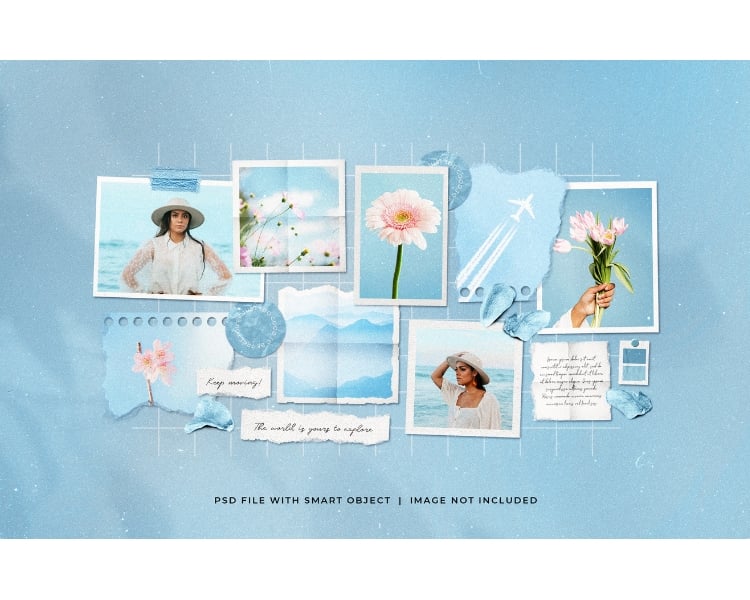
When someone wants to lose weight or stay healthy, they would want to create a mood board that features the type of body they want, the models they want to act like, foods and beverages to drink, and many others!
Think of it as a digital or physical collage that captures the essence of what you’re trying to create—a room, an outfit, a brand, or even a personal creative project. It’s like curating an Instagram feed or creating a vision board with a specific focus.
With a mood board, you mix and match visuals, experiment with different styles, and ignite your imagination. This way, you create a visual roadmap that captures the mood and atmosphere you want to bring to life.
What’s the Purpose of Creating a Mood Board?
Aspiring designers, budding artists, and dreamers all have one thing in common – to bring their ideas to life. So what better way to stay organized and get all the ideas into one beautiful and creative dump? The mood boards!
Besides acting as a roadmap to your creative journey, mood boards also help you stay organized and focused. That’s true today since there are many things to think of, distractions to take away your attention, and many ideas floating around, it’s easy to get overwhelmed.
The beauty of a mood board is that it allows you to see all your inspirations in one place, making it easier to refine your concept and ensure that everything aligns harmoniously. And when you see your ideas become tangible, it sparks inspiration and ignites the imagination!
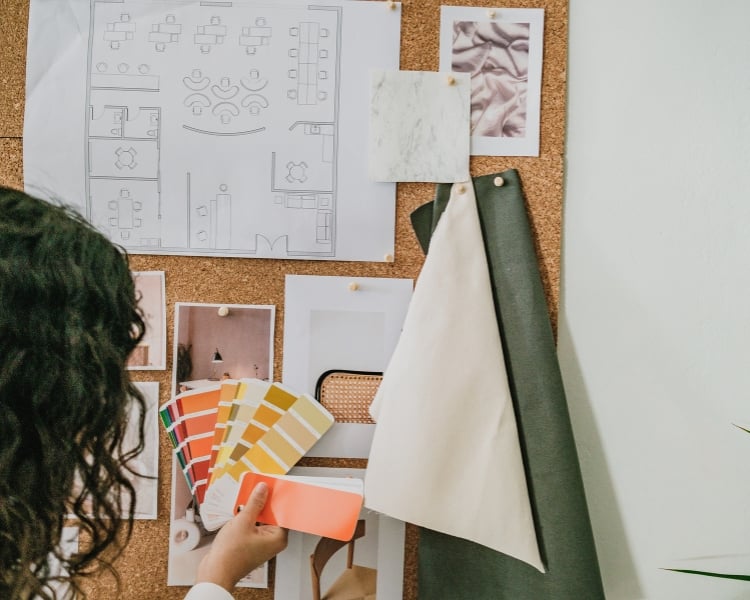
But we don’t want to spend much time creating mood boards just for us to keep private. Although that may be the case at times, it’s better to tell a trusted individual about your vision in life.
Whether collaborating with a team, seeking feedback from friends, or presenting your ideas to clients, a mood board helps you convey your creative concepts effectively. It allows everyone to visualize your vision and understand the direction you want to take.
It also encourages brainstorming, facilitates collaboration, and gathers feedback from peers or clients. You’ll never know, perhaps one of them is the key to helping you achieve your goals quickly!
Physical Vs. Digital Mood boards
Mood boards started with the traditional arts and crafts wonderland of scissors, magazines, and glue sticks.
But since we live in the modern era, digital mood boards have become phenomenal for many with their easy copy-and-paste texts and images, eye-dropping colors, and simply printing them out when done.
Hence, there are two ways to create mood boards – physically and digitally.
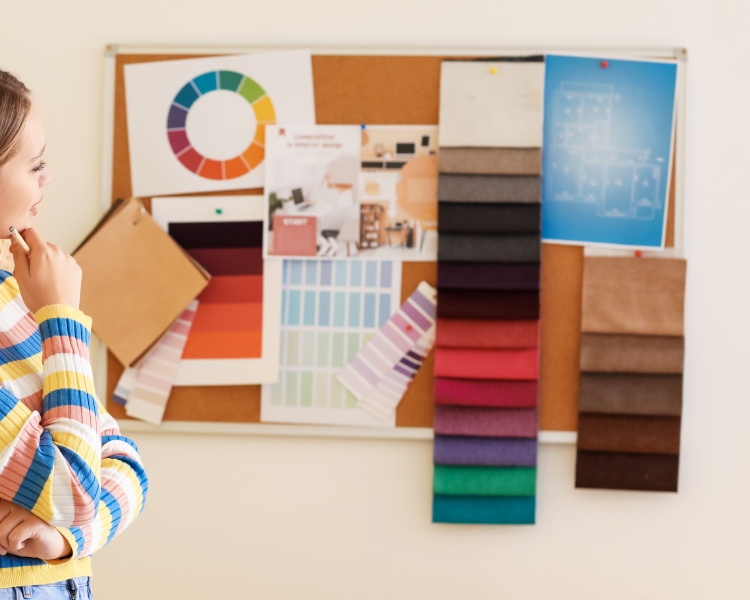
Physical mood boards involve tangible materials.
- It offers a tangible experience to feel the texture, flip through pages, and physically arrange the design elements.
- It offers a collaging experience that others might consider a ‘relaxing therapy.’
- It has limited flexibility, so making changes or swapping elements may be challenging once you’re printed or cutting out the specific picture.
- It can be considered a piece of art that you can hang on the wall or be a standalone piece.

Meanwhile, various software, online platforms, and other design tools create a digital mood board.
- It is considered a digital asset that can easily be sourced from online platforms.
- It offers better flexibility and iteration options on the design elements, which you can easily resize, rearrange, and modify with a simple drag-and-drop interface. Also, editing text is easier with digital mood boards because you can effortlessly create text boxes for your content.
- It enables effortless collaboration and sharing and facilitates real-time feedback and other remote working possibilities.
- It allows you to bring the mood board everywhere you go as they are designed to be easily portable and accessible from various devices.
All these pros and cons for physical and digital mood boards allow you to make the right decision that is ultimately based on your personal preferences, the nature of the project, and the desired level of flexibility, collaboration, and presentation.
Both mediums offer unique advantages and can be equally effective in visually conveying design ideas and inspiration.
What Should I Include on My Moodboard?
While there is no required particular element, piece to add, or a so-called ‘mood board template’ to follow, these suggestions will always help you start with the foundation.
Images.
Do you know that images are the heart and soul of mood boards? They basically add a visual element that is pleasing to the eyes. But take images from the magazine or in digital space.
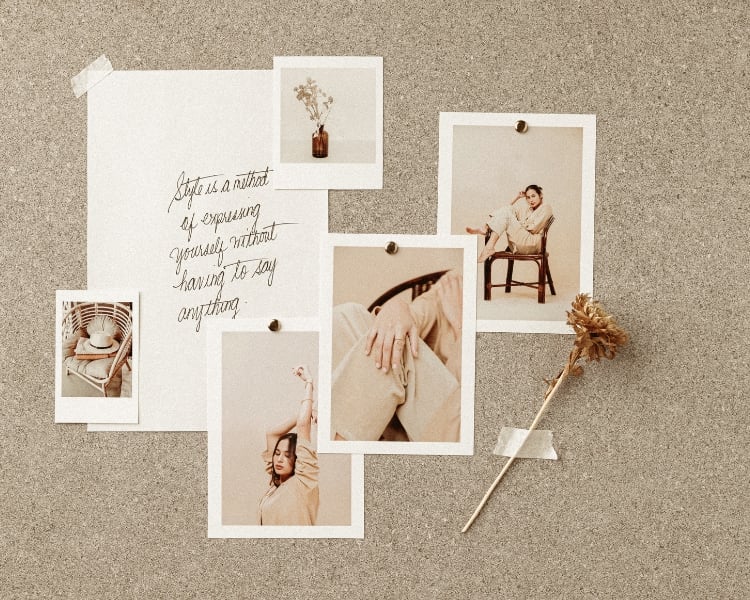
You can take a photo, create illustrations, or paint a picture that conveys your thoughts. Choose visuals that ignite your imagination and reflect your desired mood, whether it’s breathtaking landscapes, fashion inspiration, or eye-catching patterns.
Colors.
Who doesn’t have their favorite colors? In fact, who doesn’t want any color?
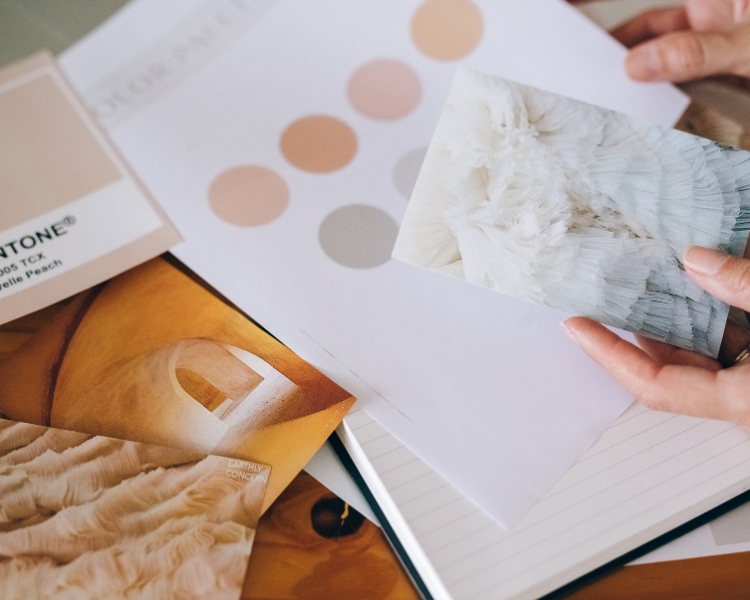
Colors can make or break the mood of your board. So, select a color palette that fits well with your vision. Play with different hues, shades, and tones to create a harmonious blend. From vibrant and energetic to soft and soothing, colors have the power to set the tone and create a cohesive aesthetic.
Typography.
Words are more than just letters, but without them, there’s a possibility that no one can understand your mood board.
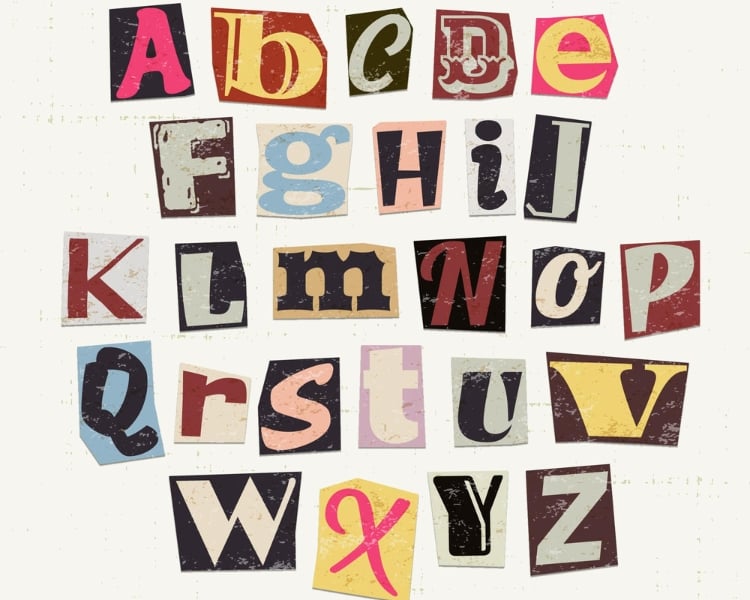
Hence, it’s wise to experiment with different fonts and typography styles to showcase your message or capture a specific vibe. Choose at least two to three (max), and see how it matches the overall style of your board. Quotes, phrases, or keywords can amplify the impact of your board and make it even more memorable.
4 Steps on How to Make a Mood Board
From gathering inspiration to arranging elements, we’ll walk you through the design process, ensuring that your mood board becomes a powerful tool in your creative arsenal.
Think of a Purpose.
What is the meaning behind your mood board? What do you want to organize, showcase, or be inspired by? The motive behind creating one will guide your choices and ensure that your mood board serves its purpose effectively.
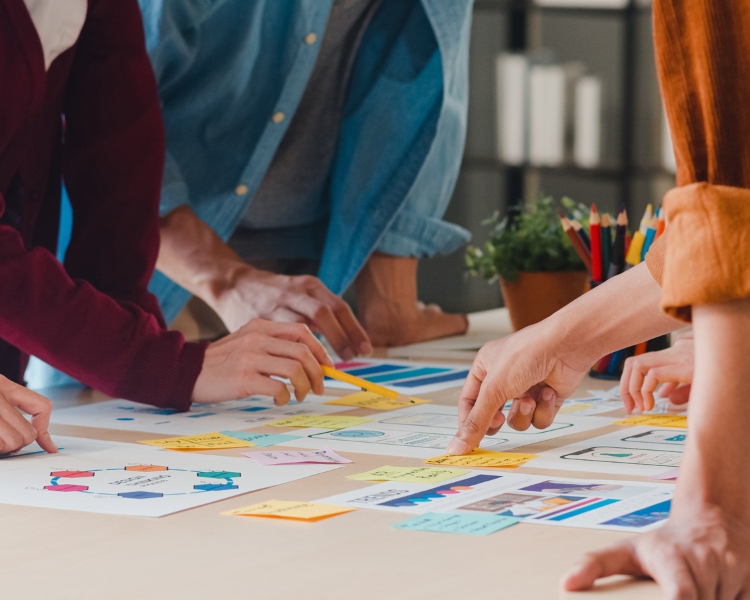
Do you need to create an interior design project? Do you want to run a social media campaign? What about building a personal brand? By defining the purpose, you can create visuals aligning with your goals and aspirations.
Collect Elements Needed.
If you need visual ideas on what your mood board should look like, get and collect everything you have in mind.
A photo of a flower? Go for it! A sticker, icon, or logo design of your favorite brand? Way to go!
The goal is to think outside the box and set your creativity in place. Only some things will make it to the final mood board, but it’s always good to have a place to start.
Here’s another checklist of what you can add:
- images, photographs, pictures
- typography or font style family
- colors and files
- videos, sounds, motions
Review and Curate your Board.
The most exciting part is just beginning!
Cut that image from the magazine. Experiment with different placements, sizes, and orientations to find the perfect arrangement. And drag-and-drop the texts somewhere within, and seriously place them harmoniously within the frame or canvas.
This process will take the longest as it depends on the final look of your board. Don’t be discouraged if your mood board looks different from the initial idea. Most mood boards start from something other than the final output.
Often, the best mood boards evolve and transform throughout the creative process. So, just transform that mess and make it pleasing to the eyes!
Collaborate and Ask for Feedback.
“Coming together is a beginning, staying together is progress, and working together is a success.” – Henry Ford.
Share your mood board with trusted individuals, such as friends, colleagues, or mentors, and encourage them to provide their thoughts and insights. Their fresh eyes can catch details you may have missed or offer suggestions that elevate your concept.
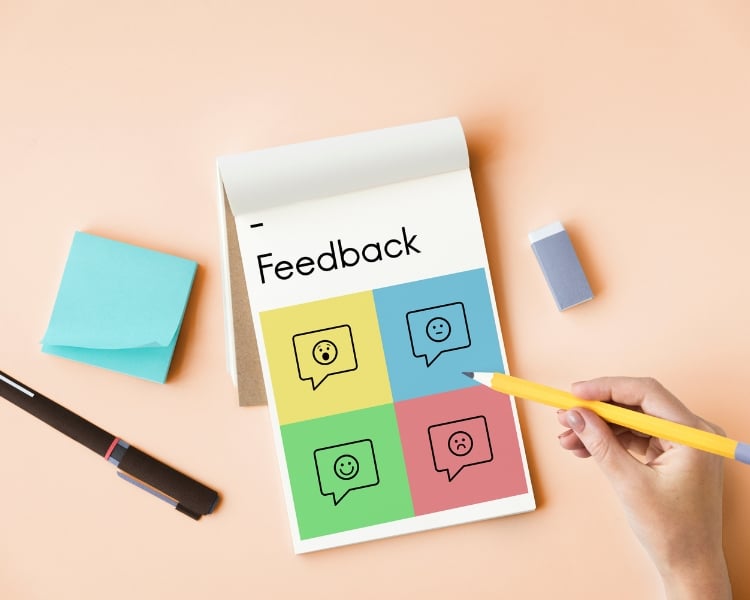
Collaboration doesn’t just end with feedback; it also involves ensuring all collaborators are on the same page. If you’re working with a team or client, communicate openly and regularly to ensure everyone’s ideas and expectations align.
But you also have to accept negative criticism. Don’t take things personally. Instead, use it as an inspiration to create a better output and ensure you and other collaborators are on the same page.
Happy Mood Boarding!
Creating a mood board is an exciting and powerful way to bring your creative visions to life. It’s not just a simple collage of images. Instead, mood boards serve as a visual manifestation of your ideas and aspirations.
Mood boards have evolved from traditional printouts to digital wonders, unlocking new creativity and possibilities. By following the four steps outlined in this guide, you can create a mood board that captures your unique style, communicates your message, and ignites your imagination – with or without mood board templates or references.
So let your imagination run wild, experiment with different elements, and curate a mood board that genuinely captures the essence of your vision!
